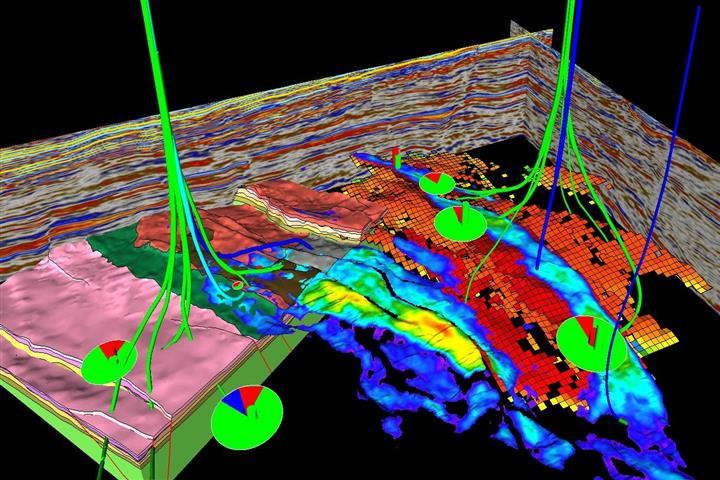• Geometrical Modeling
o Structural modeling
Structured and unstructured grid construction
Stair-step approach
Seismic horizon integration
Demonstration
o Stratigraphic modeling
Well correlation
Stratigraphic zonation
Sublayering
Demonstration
o Compartment identification
Fluid contact identification (well logs, RFT)
• Demonstration
• Property Modeling (approx. 3 days)
o Well log upscaling
Continuous properties
Discrete properties
Demonstration
o Basic Geostatistics
Variography
Kriging
Cokriging
Demonstration
o Facies modeling
Facies classification (integrated well log-core data analysis, NN)
Algorithms used for facies distribution (TGS, SGS, object modeling, MPS)
Use of variograms, VPC
Demonstration
o Petrophysical modeling
Net-to-gross, porosity, fluid saturation, permeability calculation
Techniques and algorithms used for distributing petrophysical properties
Demonstration
o Volume Calculation and uncertainty evaluation (approx. 1/2 day)
Volume calculation
Risk analysis
Demonstration
o Dynamic grid (approx. 1/2 day)
Upgridding for dynamic simulation
Property upscaling and QC
Demonstration






comments (0)